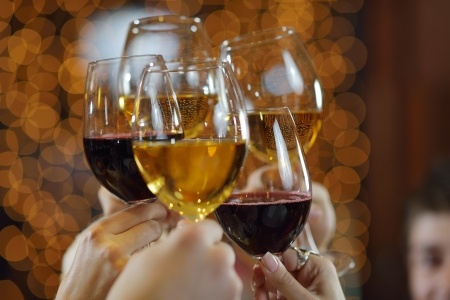Here we are in the holiday season where everything, it seems, takes on hues of red and white, from candy canes to a surprisingly controversial cup at Starbucks. For us wine lovers of course, we deal with shades of red and white year round, though I say “shades” advisedly since wine comes in all sorts of permutations of these color. I can’t think of a single white wine that is really white (in our wine classes we grade whites from colorless, called “water white,” to various shades of amber), and reds, well those are all over the place, from deep purple to pale cherry.
Why the variation? The juice of most grapes is clear (or nearly so) – it is the skin that carries the grape’s pigment. That pigment is subject to many influences, from the growing season and the amount of sun the grapes receive to elements in the soil. And once in the winery, that pigment is influenced by how the grapes are pressed and how long the skins stay with the juice.

Yes, a lot goes into how color gets in your glass and how the color gets there may influence your taste in wine – do you like a lightly colored white wine (like a riesling or sauvignon blanc) or do you go for deeper hues as you find in many chardonnays? Do you like the purple hue of young reds, where a tannic wine can sometimes give you a surprisingly sweet impression, or do you like lighter ruby colors (and sometimes lighter tannins)? So many choices!
There is a tendency among some wine lovers to put down white wines as simply a steppingstone to “real” wine, i.e. red wine. We wine egalitarians know better – wines of all colors are good, though I would have guessed that in the winter months, drinkers would consume more reds than whites. I would have been wrong, it seems. According to a British study conducted on behalf of the Wine and Sprit Trade Association (there really are people who study our drinking habits), 37 percent of all alcoholic drinks consumed over the year-end holidays will be white wine (and sauvignon blanc will account for a substantial part of that, definitely more than chardonnay).
The same study reports 35 percent of alcohol consumed will be red wine, which doesn’t leave much room for beer lovers and the cocktail crowd. Perhaps that is understandable given the importance of food to the holidays, and I have no idea where this group put rosé wine, which is one of my go-to beverages over the holidays.
Next week, I’ll pass along some wine recommendations for holiday entertaining – red, white and rosé. We’ve got your holidays covered!
Cheers.
